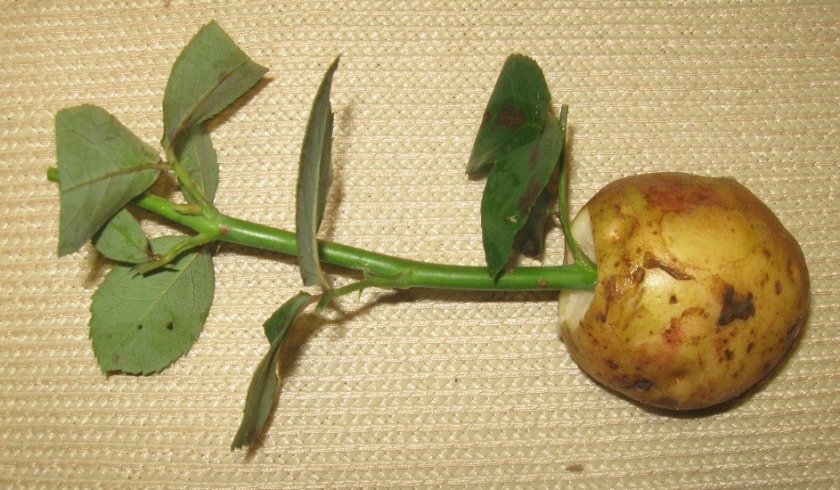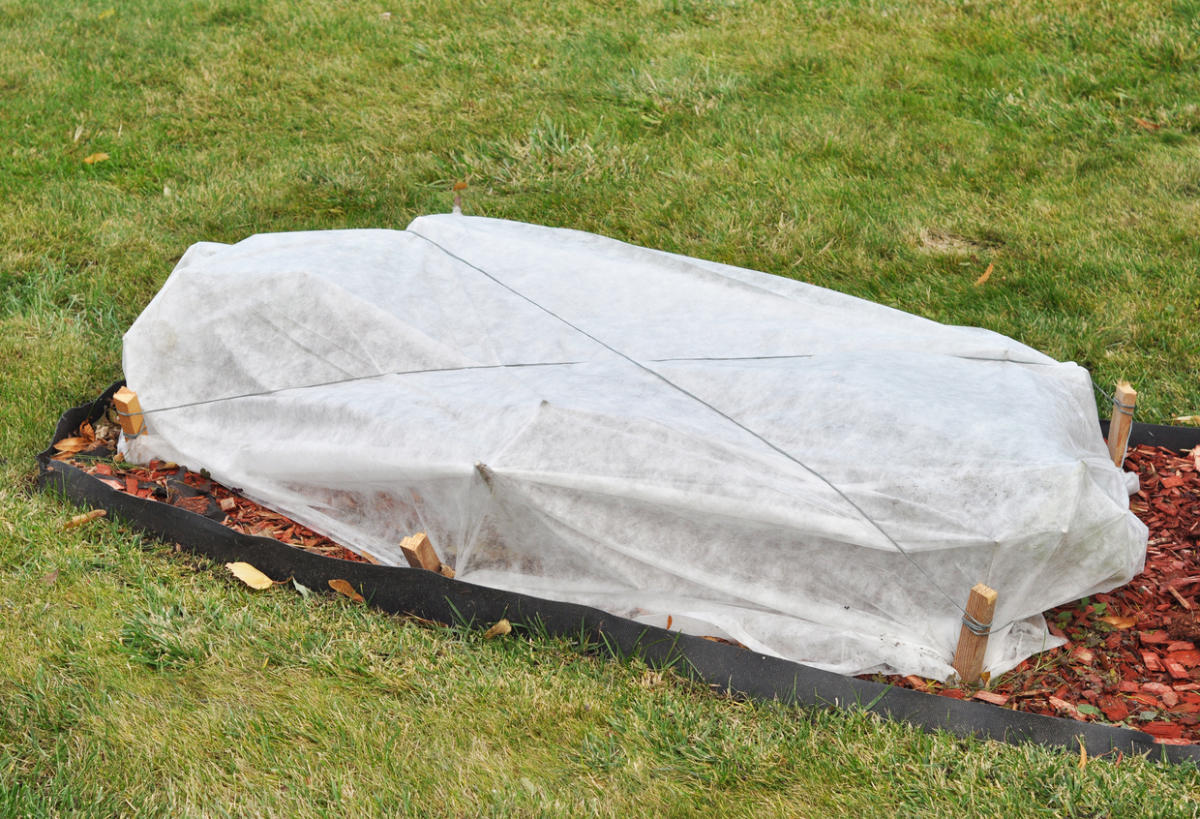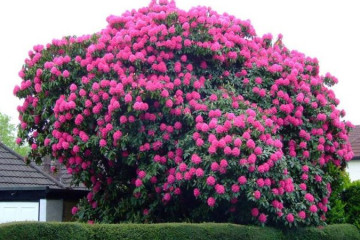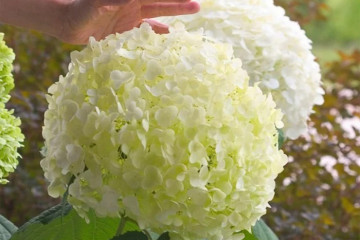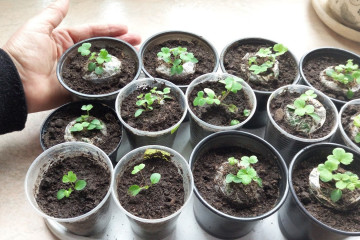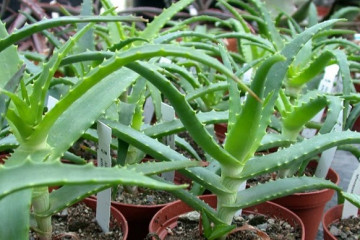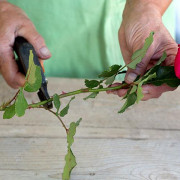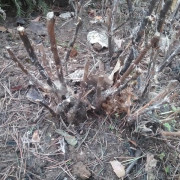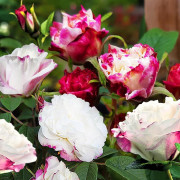How to propagate a climbing rose by cuttings and layering
Content:
Climbing roses are highly prized in landscape design and are very popular among amateur flower growers. Using the natural flexibility of these plants, you can create unique arches, pergolas, gazebos, densely covered with fragrant terry inflorescences. Despite its graceful and unapproachable appearance, climbing roses are quite easy to reproduce.
How to propagate a climbing rose
When purchasing expensive varieties of climbing roses to create flower arrangements, you do not have to overpay by buying several plants of the same variety. There are several ways that you can apply yourself and get several young plants that have all the characteristics of a mother bush.
Climbing bush breeding methods
The most popular and effective ways of growing roses are considered:
- cuttings;
- growing cuttings;
- reproduction by root suckers.
Professional breeders obtain new plants by growing from seeds. This is a very long and laborious job that requires patience and special skills. Amateur flower growers use simpler methods. Each method has its own characteristics that you should pay attention to.
Reproduction of climbing roses by cuttings
Cuttings are considered to be the most widely used method for propagating climbing roses. It can be used both in spring and autumn. Reproduction of a climbing rose by cuttings in the summer does not always work, the shoots become tough, semi-lignified, germination takes longer. And the summer heat contributes to the rapid evaporation of moisture, so planted cuttings in the open field often dry out.
Cutting preparation
Half of the success is a properly prepared planting material. The most promising cuttings are considered to be cut in the spring before the flowering of the plant. The optimum thickness of the shoot that can be cut should be at least 5 mm. The material is prepared in this order:
- A fragment with three living buds is cut from the middle part of the young shoot.
- The lower part is shortened with a garden pruner at an angle of 45 degrees.
- The top of the cutting is carefully cut two centimeters above the leaf at an angle of 90 degrees.
- On the two upper petioles, the upper fifth leaf is cut off.
- On the lower petiole, remove all the leaves and shorten it to 2 cm.
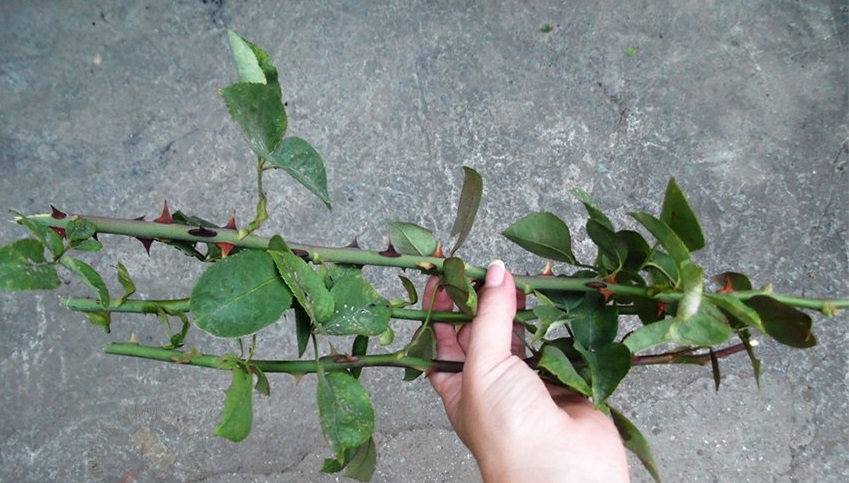
For cuttings, use the middle part of healthy shoots without visible signs of disease and pest damage
Rooting in water, soil or potatoes
To obtain a young plant from a cuttings, growers resort to several rooting methods.
Rooting in water
It is considered the easiest way. The cuttings are placed in a vessel with water, filled to 1/3 of the seedling height. The jar or glass is completely covered with a bag, creating the effect of a greenhouse. The first white roots can be seen after 15-20 days.
The main problem that growers face when sprouting roses in water is rotting of the cutting.To avoid this, crushed activated carbon is added to the water. Also, do not allow water to stagnate. Every three to four days, you should change the water, and rinse the cutting itself.
Rooting a seedling in the ground
Decay of planting material can be avoided by rooting the rose directly in the soil. To do this, take a light soil based on sod land, peat and sand. Any universal composition is suitable from purchased mixtures. The cuttings are planted in small pots, watered abundantly and covered with a jar or bag, creating the effect of a greenhouse.
The containers are transferred to a bright place, protected from direct sunlight, and kept at a temperature not lower than +23 degrees. The greenhouse can be removed as soon as the first young leaves appear. It takes 14 to 20 days for a seedling to root in the substrate.
Many flower growers practice spring rooting of cuttings right in the garden. Prepared fragments of shoots are planted to a depth of 2 cm at a distance of at least 5 cm from each other. After disembarking, they must be covered with cans or a low film tunnel is made using arcs.
Sprouting roses in potatoes
Quite a popular breeding method among experienced florists. This method is used to successfully cut not only roses, but also other types of decorative deciduous, flowering and even conifers.
The use of potatoes helps to maintain a consistently moist rooting environment. In addition, starch and carbohydrates, which are rich in tuber, are sources of nutrition for a young seedling.
The method consists of several main stages:
- Before disembarking, they dig a narrow trench 15-20 cm deep.
- A layer of sand about 5 cm is poured onto the bottom.
- Take medium-sized potatoes. All eyes must be cleaned and removed.
- Cuttings are inserted into the potatoes with a sharp cut inward.
- The prepared material is laid out in a row at a distance of 15-20 cm from each other.
- The cuttings are covered with soil, tamped and watered abundantly.
- The resulting row is covered with a film.
After 10-14 days, the roses are opened for airing for 20-30 minutes daily, after another week the film is completely removed.
Obtaining quality planting material using potato tubers is one of the most effective and simple ways for those who still do not know how to propagate a climbing rose with cuttings in summer.
How to propagate a climbing rose by layering
Good results can be achieved by propagating the bushes by layering. With this method, the rooting of the seedling and its survival rate are 100%.
When is the best time to drop layering
The work is carried out in the spring, when the soil is warm enough, but the plant has not yet grown. The bush must be pruned and treated against pests and diseases. Shoots are chosen strong, from one year old.
Also, good results can be achieved by digging in the shoot in late autumn. Already in July, it will be possible to observe the development of a young bush.
How to do it right
The whole process of propagation of a climbing rose by layering looks like this:
- It is necessary to dig a furrow 40 cm deep. In a separate container, mix compost, humus and garden soil taken in equal parts.
- Fill the hole with 20-25 cm.
- Take the lash horizontally into the groove and press firmly against the ground with pegs.
- Cover the shoot with prepared fertile soil and water well.
- The tip of the shoot should be secured with a garden bracket so that it does not rise up.
- It is very important to ensure that the soil does not dry out, watering is carried out every two days. Every day in summer.
With regular watering and top dressing, by autumn it will be possible to see the germination of young plants, which indicates the formation of a powerful root system.
The plant is separated from the mother bush in late autumn, but it is better to do this in the spring. This way you can minimize the risk of freezing of a young, immature layer.
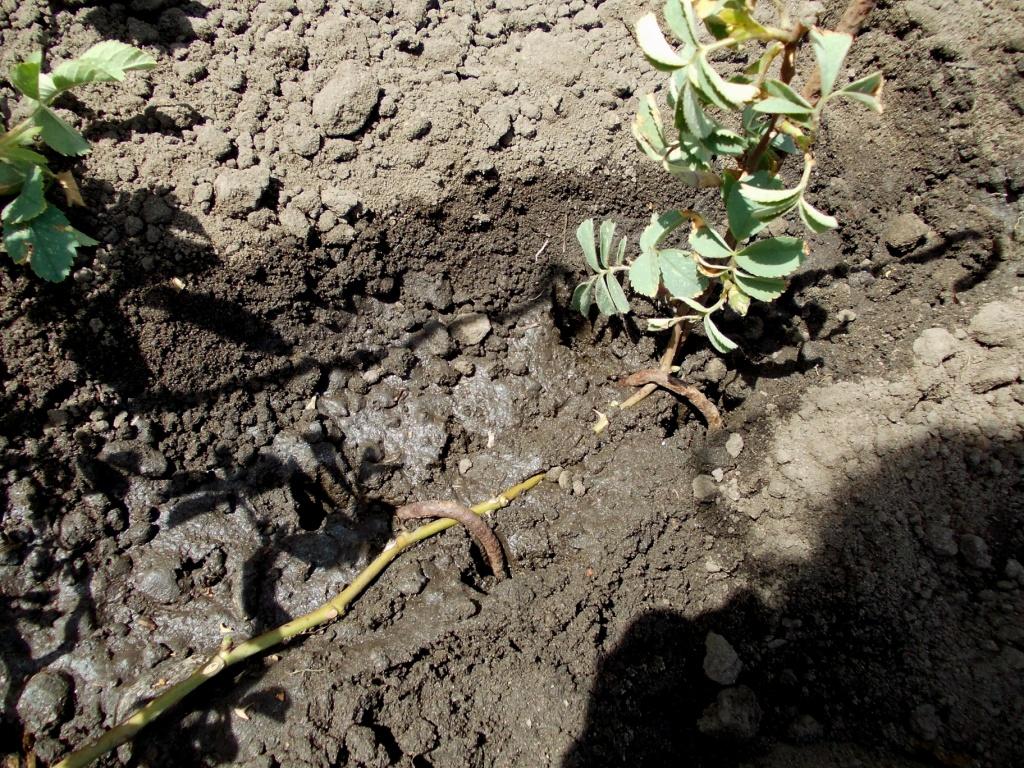
When propagating by layering, the whip must be cleaned from the foliage, leaving 5-7 leaves at the top of the shoot
Seedlings grown in this way will be able to bloom next year. But experienced florists advise pruning, with an emphasis on growing a powerful bush that can rapidly develop and curl in the future. The buds of the current year are removed, receiving an abundant and long-lasting flowering of a strengthened rose bush in the next season.
Reproduction by root suckers
Most types of roses can propagate by this method, including climbing roses. Bushes of climbing species form underground shoots ending in overground powerful stems. The division is carried out as follows:
- A rooted shoot emerging from the soil is revealed.
- Slightly dig up the soil around the stem with a small shovel.
- Carefully clean the soil and reveal the presence of roots.
- If the shoot has roots, the young plant is cut off with a sharp shovel, and the cut is sprinkled with wood ash.
- The shoot is transplanted to a permanent place or for growing.
If the roots are not found, then this process can be accelerated by introducing phosphorus-containing drugs that promote root formation. You can also use any kind of rooters containing phytohormones and auxins.
How to care for a rose after planting
Young roses require careful maintenance, not only during the rooting process.
After planting seedlings in a permanent place, special attention should be paid to the following points:
- Compliance with the correct watering regime. The soil is kept moist, especially in the summer heat. Plants are poured abundantly with water in the evening.
- Sun and wind protection. It is necessary to create a protective background from direct burning sunlight and drafts at least in the first two weeks after disembarkation.
- Weed removal. They not only "clog" the plant, dampening its growth, but also absorb nutrients from the soil.
- Fertilizing seedlings. As soon as the plant grows, you can start feeding with mineral and organic fertilizers. The last time the drugs are applied is in August. Nitrogen preparations contribute to the rapid build-up of green mass and the development of powerful lashes. For abundant flowering, fertilizers with a high percentage of potassium are recommended.
- Loosening the soil. This will saturate the soil with oxygen, contributing to the proper development of the root system.
- Providing protection against freezing. Rose bushes are huddled high, bent to the ground, covered with straw or spruce branches. You can also use peat and burlap. In the spring, when the temperature rises, the material is removed to avoid steaming the rose bushes.
General recommendations for planting climbing roses:
- Heavy clay soils are absolutely not suitable for climbing roses.
- Ensure good drainage and drainage before planting the plant.
- A mulching layer should be laid around the bush, which will retain moisture, preventing it from drying out.
- Do not plant roses in places where groundwater is close.
For many gardeners, the cultivation of climbing roses becomes a lifelong hobby. The process is a lot of pleasure, because a self-grown plant is always more expensive than a purchased one.Despite the possible difficulties in growing, every gardener can find his own home breeding method for the "queen of flowers", leading to success.

